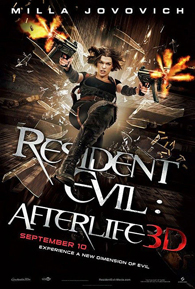
In more recent times, Paul WS Anderson is the carrier of this rule. In 1997, the director made Event Horizon, a scifi horror flick that was ahead of its time. It was the most gory, explicitly violent, and unsettling film that hit the cinemas then – and I think it still stands up well to modern horror films. Test audiences reacted badly to it; the studio ordered half an hour of cuts before releasing it. Those were the days before DVDs with directors’ cuts. The film footage was completely lost, and Event Horizon has a cult following these days. Like it or not, Anderson has earned his sainthood.
These days, Paul WS Anderson makes easy money by producing and directing the Resident Evil film series based on the Biohazard/Resident Evil console game franchise. We don’t quite blame him for creating a series of CGI action films starring the ever-stunning Milla Jojovich of L'Oréal fame as a superpowered one-woman army fighting both zombies and evil corporations simultaneously. In fact, we don’t feel it in our bones to hold it against Anderson for creating a true popcorn flick – a visual treat that makes very little logical sense and has performances delivered by actors who look like they know how cookie-cutter the dialogue is.
For the uninitiated, Resident Evil: Afterlife picks up the story immediately from the third (and probably the best, so far) film in its franchise, Resident Evil: Extinction. Alice begins to make good on her vow to bring down the evil Umbrella Corporation while a small band of survivors (They are not the ones we saw in Extinction…ahem!) continue in their quest to survive the global zombie apocalypse. I understand that the plot and the CGI boss level monsters are roughly based on the Resident Evil 5 video game. In any case, Milla kicks zombie and evil corporation butt in slow motion. While the writing and concept is not as good as its immediate predecessor, the action is on par, and the setpieces are worth the 3D.

